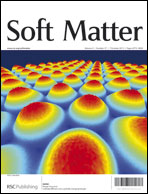Acoustic streaming in gas-fluidized beds of small particles
Abstract
An increasing number of applications rely on the use of gas-fluidized beds of small particles to enhance processes based on the mass/heat transfer between a gas and a solid. On the other hand, experimental studies have shown that application of high-intensity acoustic fields serves to further intensify fluidized bed processes. It is well known that the fluid streaming developed around the surface of a solid body subjected to a sound wave leads to a notable increase of the mass/heat transfer. However, several additional phenomena are observed in sonoprocessed fluidized beds requiring a close examination. In a sonoprocessed fluidized bed, acoustic streaming is superposed on the fluidizing gas flow, which exhibits large fluctuations within the bed at a local level due to long-range hydrodynamical interactions. Attenuation due to viscous friction and thermal conduction on the surface of the small particles is expected to play a relevant role. Fine particles may be entrained by the acoustic flow field whereas acoustic streaming on the surface of not entrained particles gives rise to an increased drag. Entrainment of fine particles in the sound wave may serve to improve fluidization uniformity in dense beds or to induce particle agglomeration in diluted beds. Acoustic streaming leads also to a large-scale fluid recirculation characterized by velocities sufficiently high as to affect the fluidized bed dynamics. A substantial modification of the dynamics of fluidized beds may thus occur depending on intervening physical parameters such as particle size and density, sound wave intensity and frequency, fluid properties, fluidization regime and system size. In this manuscript, the main features of acoustic streaming and the associated phenomena due to the application of high-intensity acoustic fields on fluidized beds are analyzed from a review on the fundamentals of acoustic streaming and observations on sonoprocessed fluidized beds. Results inferred from this analysis are expected to help assess the optimum conditions under which sound assisted process intensification would be maximized in each particular application.


 Please wait while we load your content...
Please wait while we load your content...